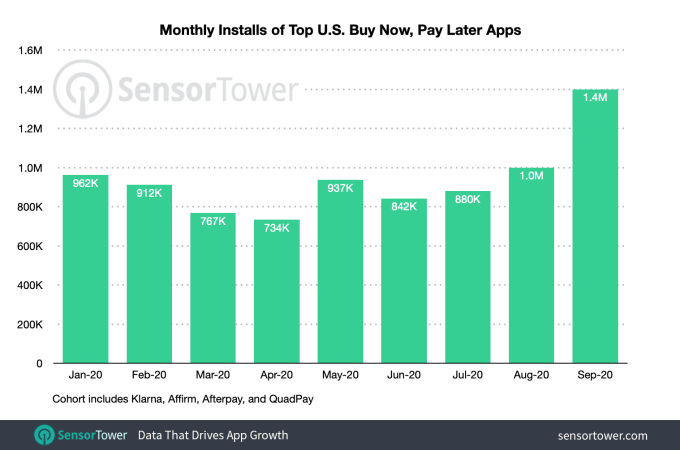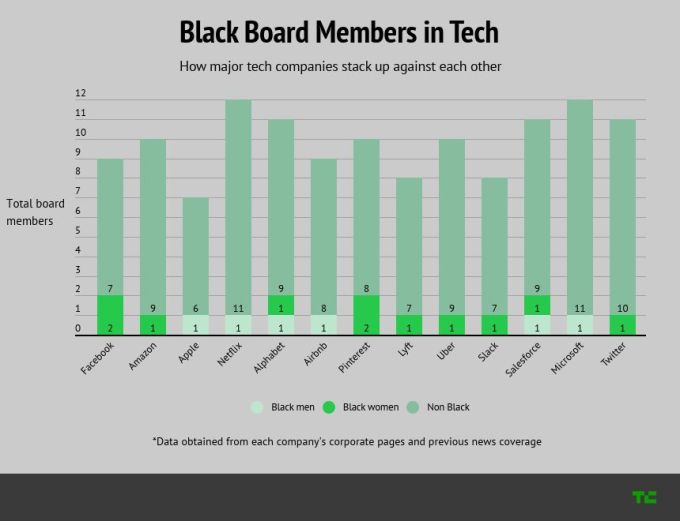- October 24, 2020
- by:
- in: Blog
Welcome back to This Week in Apps, the TechCrunch series that recaps the latest OS news, the applications they support and the money that flows through it all. The app industry is as hot as ever, with a record 204 billion downloads and $120 billion in consumer spending in 2019. People are now spending three hours and 40 minutes per day
Welcome back to This Week in Apps, the TechCrunch series that recaps the latest OS news, the applications they support and the money that flows through it all.
The app industry is as hot as ever, with a record 204 billion downloads and $120 billion in consumer spending in 2019. People are now spending three hours and 40 minutes per day using apps, rivaling TV. Apps aren’t just a way to pass idle hours — they’re a big business. In 2019, mobile-first companies had a combined $544 billion valuation, 6.5x higher than those without a mobile focus.
Top Stories
Quibi dies…and no one was surprised
There was so much wrong with Quibi’s premise that it’s sometimes hard to even know where to start. But at the core, its problem was that it fundamentally misunderstood how, when and why users would watch video on their phones.
The company’s thinking was that you could fund high-production value content ($100K/minute, yikes) then chop it up into smaller “bites,” add a technology layer, then call this a reinvention of cinema.
The reality is there was little demand for this sort of content, and it didn’t fit with how people want to be entertained on their phones.
When people want to appreciate high-quality filmmaking (or even TV production), they tend to want a bigger screen — they’ve spent money for their fancy high-def or 4K TV, after all. Pre-COVID, they might even pay to go a movie theater. On mobile, the production value of content is far less of a concern, if it even registers.
Quibi also misunderstood what users want to watch in terms of video on their phones when they have a few minutes to kill.
By positioning its app in this space, it had to compete with numerous and powerful sources for “short-form” content — existing apps like YouTube, TikTok, Facebook (e.g. News Feed content, Watch feeds), Instagram Stories, Snapchat and so on. This is content you don’t have to get invested in, since you’re just distracting yourself from a few minutes of boredom. It’s not a time or place to engage with a longer story — chopped or otherwise.
Quibi also cut the length of content to serve its artificial limitations — at the expense of story quality and enjoyment.
A reality show dumbed down to just its highlights is almost unwatchable, as it exposes the editors’ machinations and manipulations that are better hidden among longer stretches of fluff. And there was simply no reason to cut down movies — like Quibi’s “The Dangerous Game,” for example — into pieces. It didn’t elevate the storytelling; it distracted from it. And if you wanted a quick news update (e.g. Quibi’s “Daily Essentials”), you didn’t need a whole new app for that.
Quibi content may have been considered “high quality,” but it often wasn’t good. (I still can’t believe I sat through an episode of “Dishmantled,” where chefs had to recreate dishes of food that were thrown in their face. And Quibi had the nerve to shame YouTube’s low-quality and lack of talent?!)
Quibi also wanted to charge for its service, but its catalog wasn’t designed for families, with content that ranged from kids to adult programming. It didn’t offer parental controls. This immediately limited its competitiveness.
At launch, Quibi also limited itself to the phone, which meant it limited your ability to use the phone as a second screen while you watched a show. (There was no PiP support). TechCrunch has been writing about phones as the second screen for the better part of a decade, often with a focus on startups. But in Quibi’s case, it killed the second screen experience, seemingly forgetting that people text friends, order food, check Twitter and peek in on other apps while a TV show plays in the background. Did it really think that a reboot of “Punk’d” deserved our full attention?
Quibi naturally blamed COVID for its failure to thrive. It had imagined a world where users had ample time to kill while out and about: commuting on the subway, standing in long lines, that sort of thing.
But even this premise was flawed. It would have eventually caught up to Quibi, too; COVID just accelerated it. The issue is that Quibi imagined the U.S. as only a swath of urban metros where public transportation is abundant and standing in lines is the norm. In reality, more than half (52%) the U.S. is described as suburban, 27% is urban and 21% is rural. Non-urban commuters often drive themselves to work. Sure, they could stream Quibi during those commutes, but not really look at it. So why burn high-production value on them? And standing in long lines, believe it or not, is not actually that common in smaller cities and towns, either. If it only takes two minutes to grab a coffee or a burrito before you hop back in your car, do you really want to start a new show?
So where would that have left Quibi? Hoping for Gen Z’ers attention as they lounge around their bedrooms looking for something to do? And yet it wanted to appeal to these kids using Hollywood A-Listers they don’t even know? As COVID pressed down, it left Quibi in competition with (often arguably better) content that streamed natively on the TV from apps like Netflix, HBO, Hulu, Prime Video, Disney+, and others where you could binge through seasons at once instead of waiting every week for a new “quick bite” to drop.
There’s more, so much more that could still be said, including the fact that a former eBay and HP CEO may not be the right person to lead a company that wanted to dazzle a younger demographic. Or how its video-flipping TurnStyle feature was clever, but added complexity to filmmaking, and was not enough of a technological leap to build a business around. Or how, no matter how much money it had raised, it was still not enough, compared with the massive budgets of competitors like Netflix and Amazon.
You can read a further post-mortem round-up here. And another here. Because we can’t get enough post-mortems, apparently.
In the meantime, TikTok still isn’t banned.
Snap hits record $50B valuation
Snapchat’s maker was forecast to bring around $555 million in revenues in Q3 but posted $679 million instead, a 52% YoY increase, in a surprise earnings beat. EPS were an adjusted $0.01, beating an expected loss of $0.04. The company also grew daily active users by 4% (11 million) to 249 million, an 18% YoY increase. Snap’s net loss of $200 million was a 12% improvement over last year, too.
As a result of the earnings, shares jumped nearly 30% the next day and its valuation cracked $50 billion for the first time, a record high.
During earnings, the company touted it now reaches 90% of the Gen Z population and 75% of millennials in the U.S., U.K. and France. User growth was attributed to new products, including Profiles, Minis, Lens creation tools and AR ads. In particular, Snap leveraged the Facebook ad boycott to reach out to brands that wanted to “realign their marketing efforts” with companies that “share their corporate values,” the company said.
Snap also just launched its TikTok competitor, Sounds on Snapchat, which lets users add licensed music to their Stories.
Weekly News Round-Up
Platforms
- Apple releases iOS and iPadOS 14.1. The first major update to iOS 14 delivers multiple bug fixes, including those impacting widgets, streaming video and Family Setup on Apple Watch, among others. It also added support for 10-bit HDR video playback and editing in Photos on iPhone 8 and later.
- iOS 14 bug continues to reset default email and browser apps. After updating your preferred email or browser app, iOS 14 forgets what third-party app you’ve set as the default. Yes, it was doing this before. Are we still so sure it’s a bug?
- DOJ antitrust lawsuit goes after the multibillion-dollar deal that positioned Google as the default search engine on browsers, phones and other Apple devices.
- AirTags patent applications describe use cases like locating the nearest defibrillator, monitoring users’ posture and playing avatar-based games, giving a little more insight into how Apple envisions the future of its smartphone-findable tags.
- Google embraces iOS 14 widgets. Google already offered one of the more useful widgets for iOS 14 with its Search widget, which has been downloaded by “millions.” This week, it introduced more, including a Google Photos widget that let you revisit your memories, and a YouTube Music widget.
- RCS support in Android Messages expands. Following the U.S. debut, RCS has rolled out to a number of new countries, and can now be found in Italy, Portugal, Singapore, Argentina, Pakistan, Poland, Turkey, Denmark, Netherlands, Austria, Bangladesh, Belgium, Croatia, Czechia, Greece, Ireland, Israel, Kosovo, Lithuania, New Zealand, Serbia, Slovenia, Sri Lanka, Switzerland, Australia, Bulgaria, Indonesia, Japan, Kenya, Latvia, Lebanon, Uganda and Ukraine. The last nine were just this month.
Trends

Image Credits: Sensor Tower
- Buy Now, Pay Later app usage in the U.S. up 186% year-over-year as of Sept. According to Sensor Tower, apps that let consumers make purchases on payment plans have been climbing steadily this year since the COVID-19 pandemic. The report looked at Klarna, Affirm, Afterpay and QuadPay, which together have generated 18 million lifetime installs across the App Store and Google Play. Installs were up 115% YoY in September, while monthly actives were up 186%.
- U.S. contact-tracing apps are a disjointed wreck. The WSJ examined the state of COVID-19 contact-tracing apps in the U.S. and found that states focusing on their own efforts, due to the lack of a national plan, has left a disjointed patchwork of tools. Only 10 states, plus D.C., have used the framework built by Google and Apple; 11 are piloting or building apps. The EU, meanwhile, switched on cross-border interoperability for its first batch of tracing apps.
- Gen Z spends 10% more time using top non-game apps than older users, at 4.1+ hours per month. The figure excludes pre-installed apps and was calculated on Android devices in select markets, including the U.S. Gen Z users also engaged with non-game apps more often than older users, at 120 sessions per month per app.
- U.S. consumers spend $20.78/mo on average on their app subscriptions, according to new data from Adjust. The 25 to 34-year-old age group spends the most on subscription apps at $25.85/mo, while those 55 and over spend the least, at $13.97/mo. In addition, more than a quarter of millennials and Gen Z consumers said they have stopped paying for other services in order to buy subscriptions on mobile app services (e.g. option for fitness apps over going to the gym).
- Dating apps are on the rise in the U.S., says Apptopia. New users for Hily, Match, BLK, Bumble and Grindr are on pace to grow month-over-month at 32%, 28%, 20%, 18% and 11%, respectively.
Services

- Amazon’s Luna game streaming service opens in early access to its first customers. The service offers a library of 50 games and works on Mac, PC, Amazon Fire TV, and iOS devices, courtesy of a web app to work around the App Store rules. Initial reviews describe the service as sometimes struggling with performance over Wi-Fi, but offering a good web app experience. Luna features some big titles but xCloud still has the better lineup. Its real killer feature, however, may be the promised Twitch integration, arriving in the future.
- SoundCloud launches a $19.99/month DJ plan, SoundCloud DJ, that offers unlimited offline access to its catalog. Users can also stream high-quality audio and mix tracks using select DJ apps, including Virtual DJ, Cross DJ and Denon DJ.
- Put your five-star reviews on your home screen. IMore spotted a must-have motivational tool for developers: a way to put your app’s five-star reviews as a widget on your home screen; $1.99 for this happiness boost.
Security/Privacy
Deadpool
- Apple quietly discontinues its Apple TV Remote app. The app was removed from the App Store on Wednesday. Users are now expected to use the Remote feature built into the Control Center since iOS 12 instead.
- Google will end support for its location-sharing Trusted Contacts app in December, and removes it from the Play Store. Users are directed to use similar features in Google Maps instead for finding friends and family.
Policies and Politics
- Coalition for App Fairness more than doubles a month after its debut. The Coalition for App Fairness (CAF), a newly formed advocacy group pushing for increased regulation over app stores, has more than doubled in size with this week’s announcement of 20 new partners. The organization, led by top app publishers and critics, including Epic Games, Deezer, Basecamp, Tile, Spotify and others, debuted in late September to fight back against Apple and Google’s control over app stores, and particularly the stores’ rules around in-app purchases and commissions.
App News
- Facebook to increase investments in WhatsApp for business. The company said it will expand Shopping on WhatsApp and will charge businesses for some of the services it offers on the chat app, in order to grow revenues. This includes offering to manage businesses’ WhatsApp messages via Facebook’s own hosting services. Facebook offered this info as more of a look into its roadmap, but without specifics on new services or pricing.
- Facebook is cloning Nextdoor. The feature is in testing in Canada and sees Facebook automatically generating neighborhood groups to connect local users with people, activities and items for sale.
- Court approves Kik’s settlement with SEC. The ruling ends a multi-year court battle by allowing Kik to pay a one-time $5 million fine for its violation of securities law for failing to register its 2017 distribution of its Kin tokens in its ICO.
- Roblox passes $2B in mobile player spending ahead of its planned IPO. The company’s revenues, accelerated by the pandemic, crossed the $1.5 billion mark in May 2020, then picked up another $500 million in five months, says Sensor Tower.
- Cameo enters B2B sales. The custom celebrity video app repositions its business of personalized greetings for B2B sales through an integration and rev share agreement with corporate gifting platform Sendoso.
- Adobe adds a chain of custody tool in the beta release of Photoshop and Behance that will fight misinformation and keep content attributed properly.
- Stitcher’s podcasts come to Pandora as acquisition completes. The Stitcher app also got a revamp following the deal’s finalization. The move brought several bigger podcast titles in house, thanks to Earwolf, including “Freakonomics Radio,” “My Favorite Murder,” “SuperSoul Conversations from the Oprah Winfrey Network,” “Office Ladies,” “Conan O’Brien Needs a Friend,” “Literally! with Rob Lowe,” “LeVar Burton Reads” and “WTF with Marc Maron.”
- NYT has an iOS 14 widget now. The new widget will put NYT headlines on your home screen. Note that while the widget can be installed by anyone, if you want to click through to read, you’ll still need to be a subscriber.
- PicsArt brings its app-based design tools to the web. The creative platform is chasing business users with the launch of its AI tools on picsart.com. The debut suite includes a template editor, background and object remover, video slideshow maker, text editor, and others.
Funding and M&A
- Chinese tutoring app Yuanfudao has raised $2.2 billion from investors, surpassing Byju’s as the most valuable edtech company in the world, as it’s now worth $15.5 billion.
- Retool raises $50M in funding, led by Sequoia, for its low-code tools for building internal apps that work on either desktop or mobile. The new round values the business at nearly $1 billion. Other backers include GitHub CEO Nat Friedman, Stripe founders Patrick and John Collison, Brex Inc. founders Henrique Dubugras and Pedro Franceschi and Y Combinator co-founder Paul Graham.
- Syte raises $40M to bring visual shoppers to e-commerce retailers. Visual search is already popular in apps like Google, Pinterest and eBay, but Syte wants under retailers to have the option. The round was led by return investor Viola Ventures.
- 98point6 raises $118M for its AI-powered telemedicine platform that works on web and mobile (iOS and Android).
Recommended Downloads
Halide Mark II

Image Credits: Lux
The developers of popular pro iPhone camera apps Halide and Spectre this week launched their latest creation, the Halide Mark II camera app. The new interface has been designed for one-handed operation and includes a range of new features.
These include a new gesture-based automatic and manual switcher; tactile touch for enabling and disabling features like exposure warnings, focus peaking, and loupe as you adjust exposure or focus; an overhauled manual mode; new dynamic labeling of controls and actions to explain features to new users; support for the edge-to-edge interface of the iPhone 12 models; a redesigned reviewer with a full metadata read-out; in-app memberships for photo lessons; and over 40 more changes.
A new “Coverage” feature can take a photo with Smart HDR 2/3 and Deep Fusion for maximum quality and computational processing as well as a RAW file — with only a slight delay between captures.

Image Credits: Lux
Halide Mark II also uses machine learning to process an iPhone RAW file in the app (ProRAW) with 17 steps, including detail enhancement, contrast and color adjustment and more. This feature, called Instant RAW, intelligently develops the file to get the best possible results.
And the app includes top pro tools, like a new waveform and color exposure warnings (zebras) that use XDR (Extended Dynamic Range) 14-bit RAW sampling, for accurate exposure previews and readings.
The app is $36 (currently $30 during a promo period) if you want to only pay once. Otherwise it’s $11.99 per year on subscription (currently $9.99 per year if you lock in the price now during the promo period). Subscribers to the membership plan also get perks, like custom icons. Existing Halide 1 users, unbelievably, are upgraded for free but are asked to support the app with a membership.
ClipDrop — AR Copy Paste
A new app called ClipDrop launches on iOS, Android, macOS and Windows as a new sort of “copy and paste” experience. The app uses state-of-the-art vision AI to copy images from your desktop with a screenshot to any other app (e.g. Docs, Photoshop, Canva, etc.) and it allows you to extract anything — objects, people, drawings or text.
The mobile app lets you snap photos of real-world items and then digitally transfer them to other apps or websites. In the below demo, the company shows how you could “clip” an image of an article of clothing using the camera, then import the photo into a document.
The company also just released a plugin for Photoshop that lets you drop the image into its app as a new layer with an editable mask.
The app is $39.99 per year (until November 2020, when it ups to $79.99 per year.)
Adobe Illustrator on iPad + Adobe Fresco on iPhone

Image Credits: Adobe
As part of Adobe’s virtual MAX 2020 conference this week, the company launched the first public version of its Illustrator vector graphics app on the iPad and brought its Fresco drawing and painting app to the iPhone. In time, the company plans to bring more effects, brushes and AI features to Illustrator. Fresco 2.0, meanwhile, includes new smudge brushes and support for personalized brushes, among other things.
Party Squasher
Designed for landlords, Airbnb owners or other vacation rental property owners, Party Squasher offers a hardware device and paired mobile app that counts the number of people at your house by counting the mobile phones in or around a house. The phones can be counted even if they’re not connected to the home’s Wi-Fi.
Because the device doesn’t include cameras or microphones, it’s ideal for ensuring that renters aren’t hosting large (and these days, potentially illegal) parties without violating privacy.
In the event that a large gathering is present, you’re sent a text or email so you can take action.
The device is $249 and the app charges a $199 per year subscription.
Tweets
Quibi made their “episodes” 11 minutes to avoid paying union writers. Everyone should MC Hammer dance on their grave.
— Jawn Wick (@LukeXCunningham) October 21, 2020
The No. 1 game in the App Store is now Among Us!.
Can you guess why?


pic.twitter.com/zZnrQYaBz9
#BlackLivesMatter #NOonProp22 (@hashtagmolotov) October 20, 2020















 (@tldtoday)
(@tldtoday) 





















